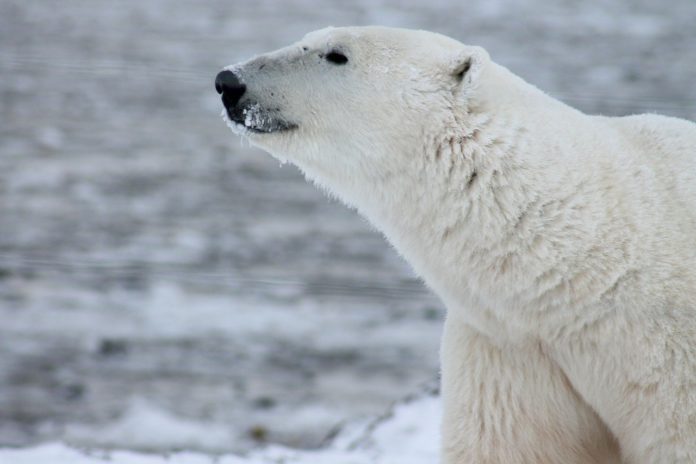Sea ice in the Arctic is vanishing at alarming rates — and for polar bear populations that rely on sea ice to survive, this could spell disaster.
Estimates from a recent study have found that most polar bear populations won’t survive to the next century if global warming and sea-ice loss continue at their current rates. The study was led by Péter Molnár, an assistant professor in the Department of Biological Sciences at the University of Toronto Scarborough, and published in Nature Climate Change.
Polar bears rely on sea ice to survive
In everything from travelling to mating, sea ice is crucial for polar bear survival.
Most important, though, is the relationship between sea ice and hunting for polar bear populations. Ice seals are a staple of polar bears’ diets, and they’re usually caught as polar bears stake out their breathing holes in the ice. Seals use these breathing holes throughout the winter, when sea ice coverage is at its greatest, and surface for air through these holes every five to 15 minutes.
Polar bears feast on these seals in the winter, relying on the fat and nutrients they provide to survive in the cold Arctic conditions. In the summer months, however, sea ice coverage is vastly reduced, and seals are no longer limited to surfacing through breathing holes. This means that polar bears can’t easily stake out their meals at predictable locations, and they’re forced to fast until the ice freezes over again and hunting conditions improve.
But with each passing year, increasing global temperatures mean that the sea ice coverage in the Arctic is decreasing. Polar bears will have to swim longer distances to find suitable hunting grounds, and will have less time available each year where they’re able to hunt.
“Arctic sea ice will keep disappearing as the world continues to warm,” Molnár said. “This means that polar bears everywhere will face longer periods without food, and this will affect their ability to reproduce, survive and persist as healthy populations.”
Most high-Arctic populations will be in jeopardy by 2100
Although scientists have long known that polar bears are in trouble, a lack of data linking sea ice decline and polar bear demographics meant that predicting exactly when we might lose different polar bear populations was difficult.
Molnár’s study used climate change models to project the number of ice-free days that will occur throughout the next century, and combined this with estimates of the number of days polar bears can fast before their populations begin to decline. To do this, they had to make assumptions about how much energy polar bears had stored in their bodies at the beginning of fasting periods, as well as how their bodies processed this energy throughout the fast.
Their study includes different estimates for different polar bear categories — for example, solitary adult female bears can likely survive longer than adult female bears with cubs.
From this, they determined a “fasting impact threshold”: the number of days that polar bears can go without food while still being able to care for their cubs and survive. By combining this threshold with estimates for how long ice-free periods will last in the future, they were able to come up with a timeline for when fasting periods will simply become too long for polar bears to survive.
Unfortunately, their estimates reveal a dire future for the majority of polar bear populations. All but a few of the populations they studied are unlikely to persist past the end of the century if warming trends continue at their current rate.
Even worse, it looks like this may be a best-case scenario.
“While our projections for the future of polar bears seem dire, the unfortunate thing is they might even be too optimistic,” Molnár explained. “For example, we assumed that polar bears will use their available body energy in optimal ways when fasting. If that isn’t the case, the reality could be worse than our projections.”
Ultimately, the authors conclude that aggressive greenhouse gas emission reductions will be required to save polar bears from extinction. While moderate reductions may prolong their persistence, it’s unlikely to be enough to save some populations from dying out before the end of the century.









































